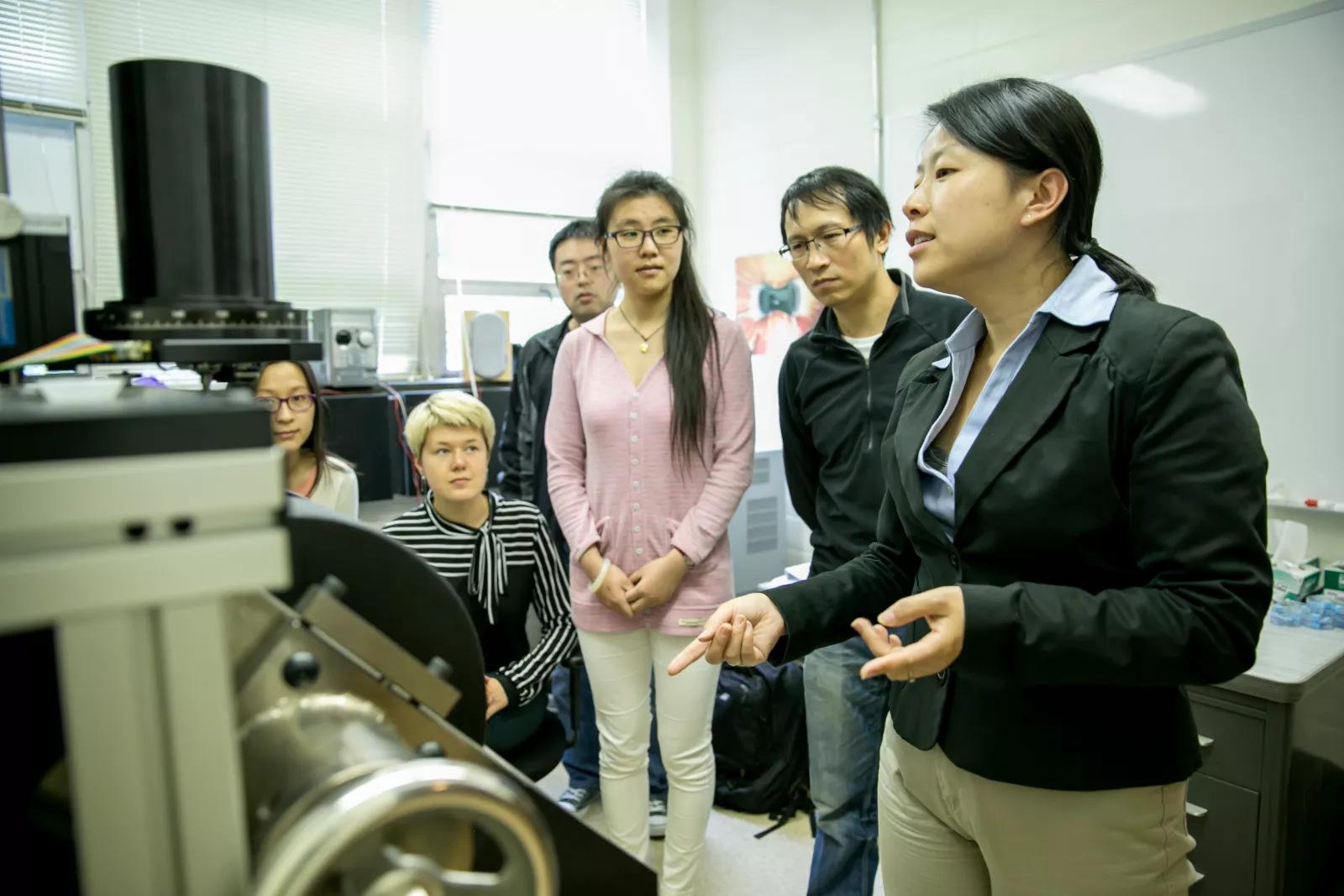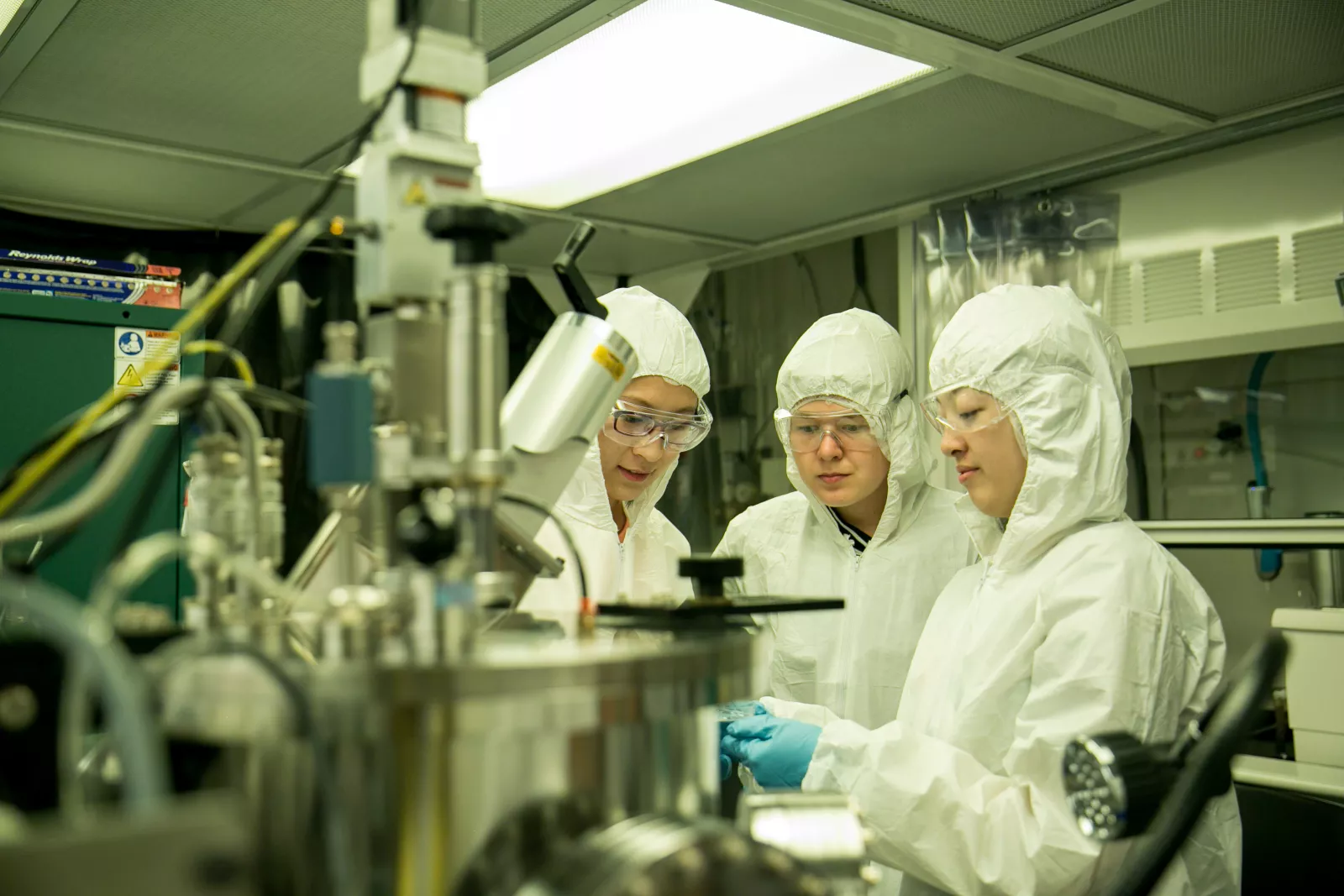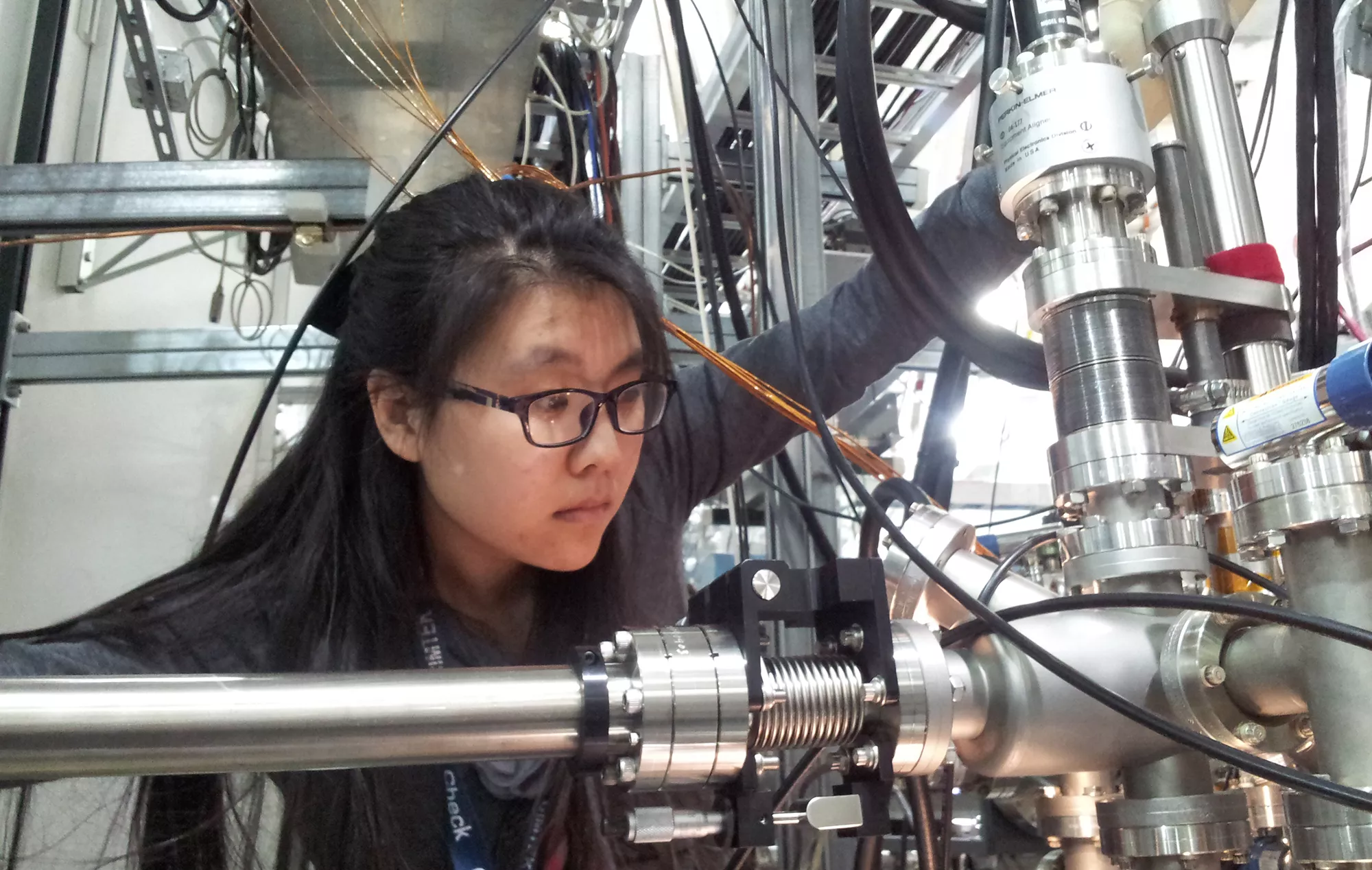Physics' Xuemei Cheng and Ph.D. Student Xiao Wang among Authors of New Study with Implications for Future of Data Storage
Physics professor Xuemei May Cheng and Ph.D. student Xiao Wang are among the authors of a new study published in Nature Physics that could have big implications in the world of data storage.
Scientists have known for years that electrons get deflected when a magnetic field is applied. In this latest research carried out at the U.S. Department of Energy's (DOE's) Argonne National Laboratory, Cheng, Wang, and their collaborators looked at how magnetic skyrmions—small electrically uncharged circular structures with a spiraling magnetic patterns—get deflected by an applied current.
“Magnetic skyrmions are topological spin structures that are promising candidates for current-driven memory devices because of their high mobility at ultralow current densities,” says Cheng.
Being able to manipulate the motion of skyrmions is of interest to materials scientists because the magnetic textures of thin films could serve as a method to encode data with low power.
"Understanding skyrmion physics could open up a wide range of new devices that are as yet still hypothetical," adds Wang.
Cheng, who received her Ph.D. from the Johns Hopkins University and held a post-doctoral fellowship at Argonne, is among the leading researchers in the field of spintronics, which seeks to exploit electron spin and its associated magnetic moment, as well as electron charge. Since she joined Bryn Mawr in 2009, she’s also made it possible for Bryn Mawr students to engage in her cutting-edge research.
In recent years, Cheng has received more than $1million in external funding from the National Science Foundation which has allowed her to build a state-of-the-art nanomaterials research laboratory at Bryn Mawr that’s so advanced it’s used by collaborators from neighboring institutions such as Villanova University, and the University of Pennsylvania.
Cheng has strived to provide Bryn Mawr students exceptional research experience not only in the on-campus laboratory but also at large-scale user facilities such as the Advanced Photon Source and Center for Nanoscale Materials at Argonne. To date, 10 Bryn Mawr undergraduate students and five Bryn Mawr graduate students—including Wang, who became a guest resident graduate student at Argonne in February 2016—have conducted research at the facility.
Cheng is also a member of the two NSF-sponsored centers hosted by the University of Pennsylvania, the REACT partnership and the recently announced Science and Technology Center for Engineering MechanoBiology. These collaborations offer a host of opportunities for Bryn Mawr students. For example, through REACT Alena Klindziuk ’17 spent 10 weeks this summer studying magnetic tunnel junctions by neutron scattering at the Institut Laue-Langevin in Grenoble, France. Through the CEMB center, Cheng’s group will receive about $500,000 in the next five years that will enable Bryn Mawr graduate and undergraduate students to conduct research in the interdisciplinary field of engineering mechanobiology.


